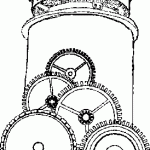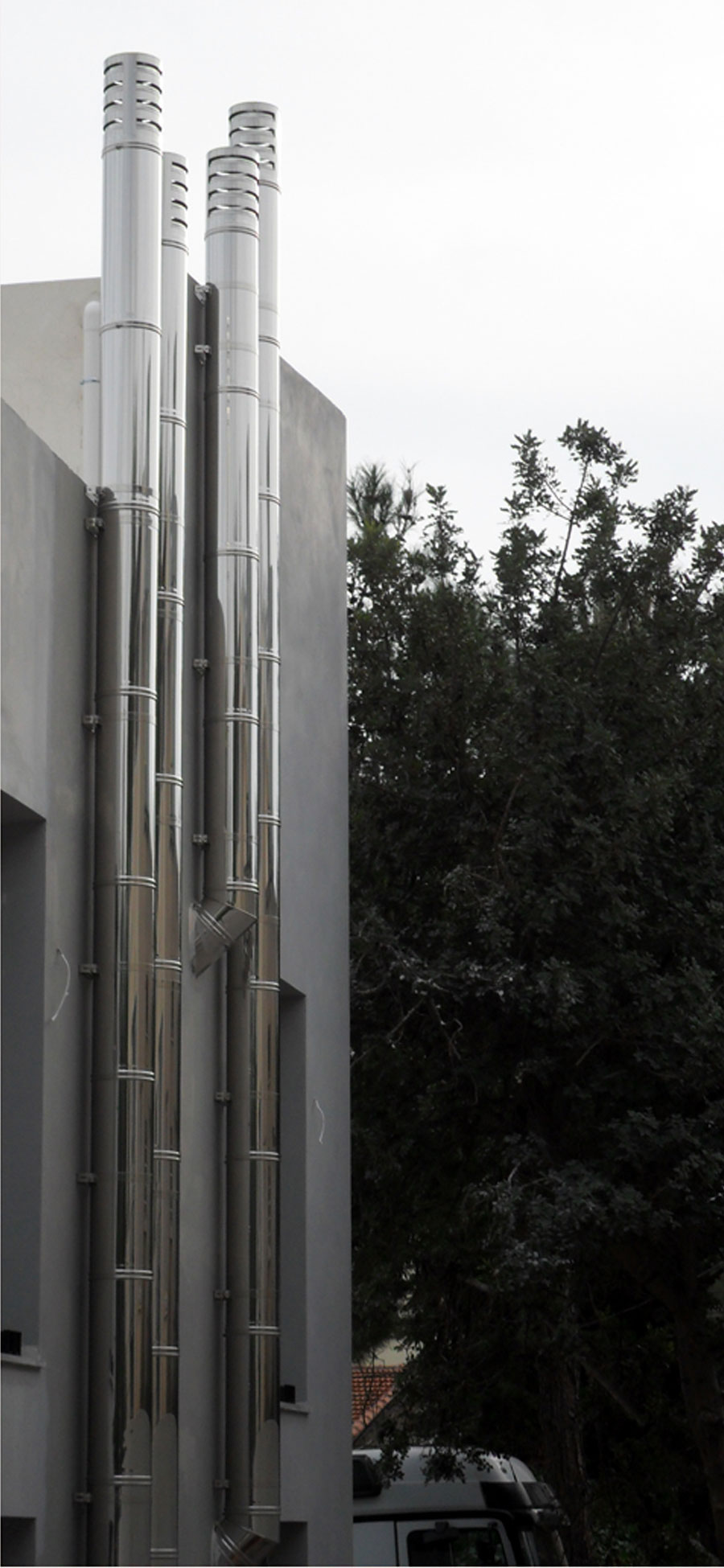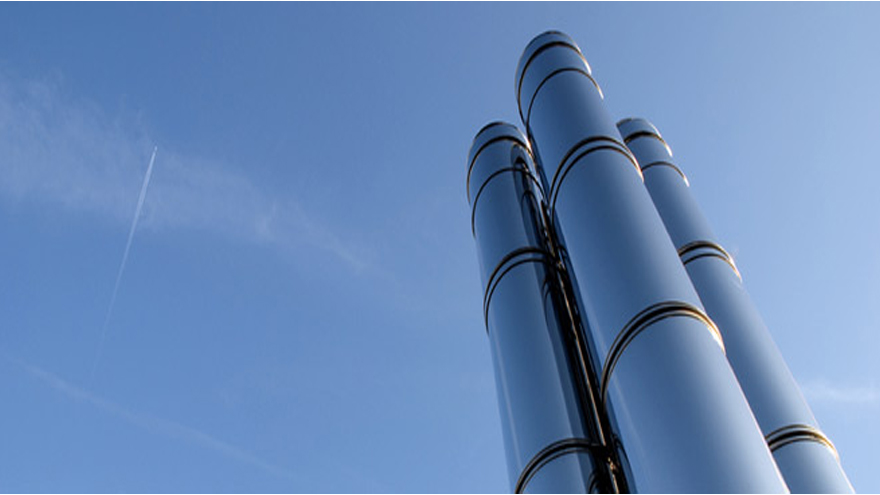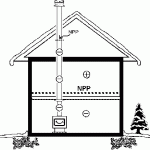The chimney is the engine that drives the entire wood heating system. No stove or fireplace can work properly without a good chimney. A good chimney belongs to the overall design of our energy save fireplace or stove and produces the desired effects:
-
-
- It’s easy to light up the fireplace and starts suctioning fast.
- It doesn’t fill the room with smoke when we try to light up the fireplace.
- There are no odors in the room or cold air comes in when we don’t use it.
-
FIREPLACE CHIMNEY : UNDERSTANDING IT’S FUNCTION
In order to achieve the above desired results, we must pay attention to the design and installation of the chimney:
- The dimensions of the chimney (cross section, height).
- Its construction material (stainless steel or built).
- Its position (if we can design and place the fireplace inside the heated space of the house, so that the chimney remains warm even when our fireplace is not lit).
- The selection of the appropriate end of the chimney (hat).
- The conformity to the building plans and building regulations of the area and the manufacturer’s instructions.
THE CHIMNEYS PHYSICS
 Ας σκεφτούμε την καμινάδα σαν τη μηχανή που οδηγεί το τζάκι. Σκεφτείτε ότι το καύσιμο της είναι η θερμόLet’s think of the chimney as the machine that drives the fireplace. Think that its fuel is heat. Consider the power it generates as a stream of hot air. The more fuel (heat) you give to the machine (chimney), the more power it produces. So, the hotter exhaust gases are, the more it produces. The stream incidentally is good. Suction is what makes the smoke run out of the house. Insulation of the chimney is important because it keeps the smoke gas hot until it gets out and increases the current. By heating the chimney, we create a stream that draws more combustion air, makes the fire burn more, bringing heat to the chimney, generating more current and so forth. An insulated chimney gives more suction with less heat.
Ας σκεφτούμε την καμινάδα σαν τη μηχανή που οδηγεί το τζάκι. Σκεφτείτε ότι το καύσιμο της είναι η θερμόLet’s think of the chimney as the machine that drives the fireplace. Think that its fuel is heat. Consider the power it generates as a stream of hot air. The more fuel (heat) you give to the machine (chimney), the more power it produces. So, the hotter exhaust gases are, the more it produces. The stream incidentally is good. Suction is what makes the smoke run out of the house. Insulation of the chimney is important because it keeps the smoke gas hot until it gets out and increases the current. By heating the chimney, we create a stream that draws more combustion air, makes the fire burn more, bringing heat to the chimney, generating more current and so forth. An insulated chimney gives more suction with less heat.
Wood stoves and fireplaces ( energy save or traditional ) work with natural flow, meaning that there is no ventilator to help the exhaust flow. In order for the chimney to function properly, it must take 20% of the heating we produce from burning wood. The experience of the past has shown that, when the wood pellet’s efficiency is well above 80%, water condensation can begin to appear on the chimney, especially from the outside if they are brick or cement. Always keep the chimney warm and it takes heat for it to work properly.
In the winter a well-designed and properly positioned chimney creates current and draws air upwards, even when the fireplace is not lit. When we start lighting a fireplace or stove connected to such a chimney then the immersion glows more easily, suction in the fireplace rises quickly and we have a lively and strong fire immediately, without smoke. This is the system we want in our home.
THE PHYSICS OF OUR HOUSE
Chimney systems in a straight line create movement of the room air upwards, even if the fireplace is not lit. When it’s cold out, the warm air of the house wants to climb upward creating a pressure difference, low pressure at the bottom of the house and high pressure at the top of the house. Between the positive and negative pressure zones there is the neutral pressure range, where the pressure in the home is equal to the atmospheric pressure outside the house. The colder outside is, the greater the difference in temperature, the higher the altitude effect. A chimney placed in the middle of the house corrects this phenomenon by being warm and taller than the house.
CLASSIC PROBLEMS AND HOW TO AVOID THEM
1. Cold air and smells. When the fireplace is not lit, cold air and smells come out of the fireplace.
* The air in the chimney hat is out of the house is very cold so the chimney draft is less than the pressure inside the house and the chimney turns back the air by cooling the fireplace and creating smells.
* return of cold air can also occur when the chimney penetrates the hot part of the building below its highest level, which occurs when the fireplace is placed on the low side of a vaulted ceiling or on the first floor of a two-story house.
- Place the chimney in the middle of the house so that it penetrates the hot space at the highest level and creates suction, even when it does not burn
2. When the door of the fireplace opens, smoke comes out. When we need to put more wood in the fireplace, smoke comes out of the door.
* When we open the door of the fireplace or stove, a lot of air must flow from the door opening to keep the smoke in, if the flow of exhaust gases is limited, smoke will flow out into the room.
- Raise the chimney straight up if possible and avoid 90˚ corners or shifts of the chimney.
3. Undertone performance: fire with smoke, difficult to get hot fire.
* Large cold chimneys, made with bricks, absorb heat from the exhaust gases, causing a slow build-up flow
- The wood we use have to be appropriate to the size of the fireplace and the chimney is insulated to keep the heat and exhaust fumes away quickly.
CONCLUSIONS
If you are planning your new home now, make adequate preparation for your fireplace and chimney.
- Include the chimney in the warm environment of the house.
- Place it straight up, not right angles or shifts.
- Insulate or use an insulated chimney.
INSTALLATION OF UNIQUE STAINLESS STEEL
For the correct installation of a double wall chimney ,the following tasks must be performed.
 With the appropriate tools we have to create a vertical line, according to which the supports will be aligned.
With the appropriate tools we have to create a vertical line, according to which the supports will be aligned.- We place dowels to the base of the wall brackets.
- We apply triangular brackets every five meters, always starting from the bottom of the vertical section of the chimney (optional and where applicable).
- Place the chimney from the bottom upwards according to the guide, the arrow that is printed on the CE label.
- The heavy-duty brackets type Ω are mounted every 1.5 meters. The pieces “lock” to each other in relation to the female-male, with the male upwards.
- The joints of the pieces, are sealed with a ring so that the chimney becomes a unified body.
- In each chimney, we put a hat. The hat offers wind and rain protection.
When the chimney is near the sea and at a distance of 1 km, its outer sheet should be INOX AISI 316, the same applies to high-condensing boilers.
If the chimney passes through a wooden roof the distance from the wood must be 8 cm.
Maintain your INOX chimney correctly, cleaning it in the spring with plastic rather than wire brush.
There is the possibility of electrostatic painting of the stainless-steel chimney. The RAL color chart will be found HERE or even HERE

